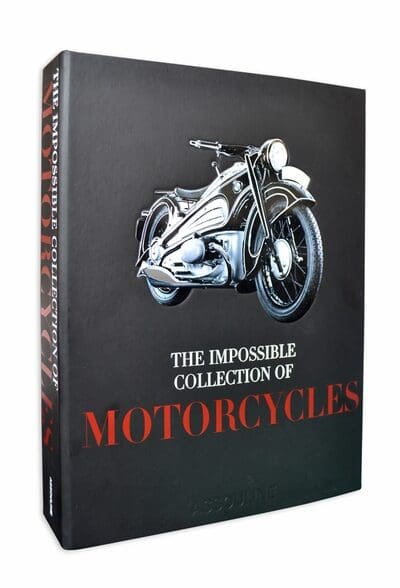For the rider who has everything … a $US695 book about motorcycles!
The Impossible Collection of Motorcycles is compiled by artist and industrial designer Ian Barry and veteran automotive journalist Nicholas Stecher.
It features some of the most unusual, stunning and important bikes of the past century or more. Certainly an amazing collection, but “impossible”? Not really.
Probably the most famous is the customised 1950s Harley Panhead with hard tail frame that became Peter Fonda’s “Captain America” bike in the 1969 Easy Rider film.
From the well-known to the hardly known, the book also includes the one-off BMW R7 which I believe I have seen at the BMW Group Classic museum in Munich.
It’s down a back street and acts as a holding house for displays at BMW’s main museum in town. Not many get to see the inside, but I had a tour in 2009 and was impressed by the display of motorbikes. Check out my museum Pinterest pix here.
Meanwhile, back to the book.

Other famous bikes featured are the 1948 Vincent Series Rapide that Rollie Free shattered land speed record on wearing nothing but a bathing suit, Evel Knievel’s 1973 Harley-Davidson XR750 and Hollywood actor, motorcycle icon Steve McQueen’s 1967 Husqvarna 400 Cross scrambler (pictured right), Burt Munro’s 1936 Velocette drag bike and Che Guevara’s 1949 Norton 500.

The 172-page book is a limited edition and is hand-bound in a black rubber clamshell case with metal plaque.
Barry’s next project is on The Falcon Ten, a collection of 10 unique motorcycles designed, engineered and built by Barry around 10 iconic engines. “The project explores the concept of the motorcycle, pursuing the highest level of design, craftsmanship, and performance by investigating the history, contemporary application, and latent potential of engineering.”
Limited edition motorcycle book for $695

The Impossible Collection of Motorcycles


